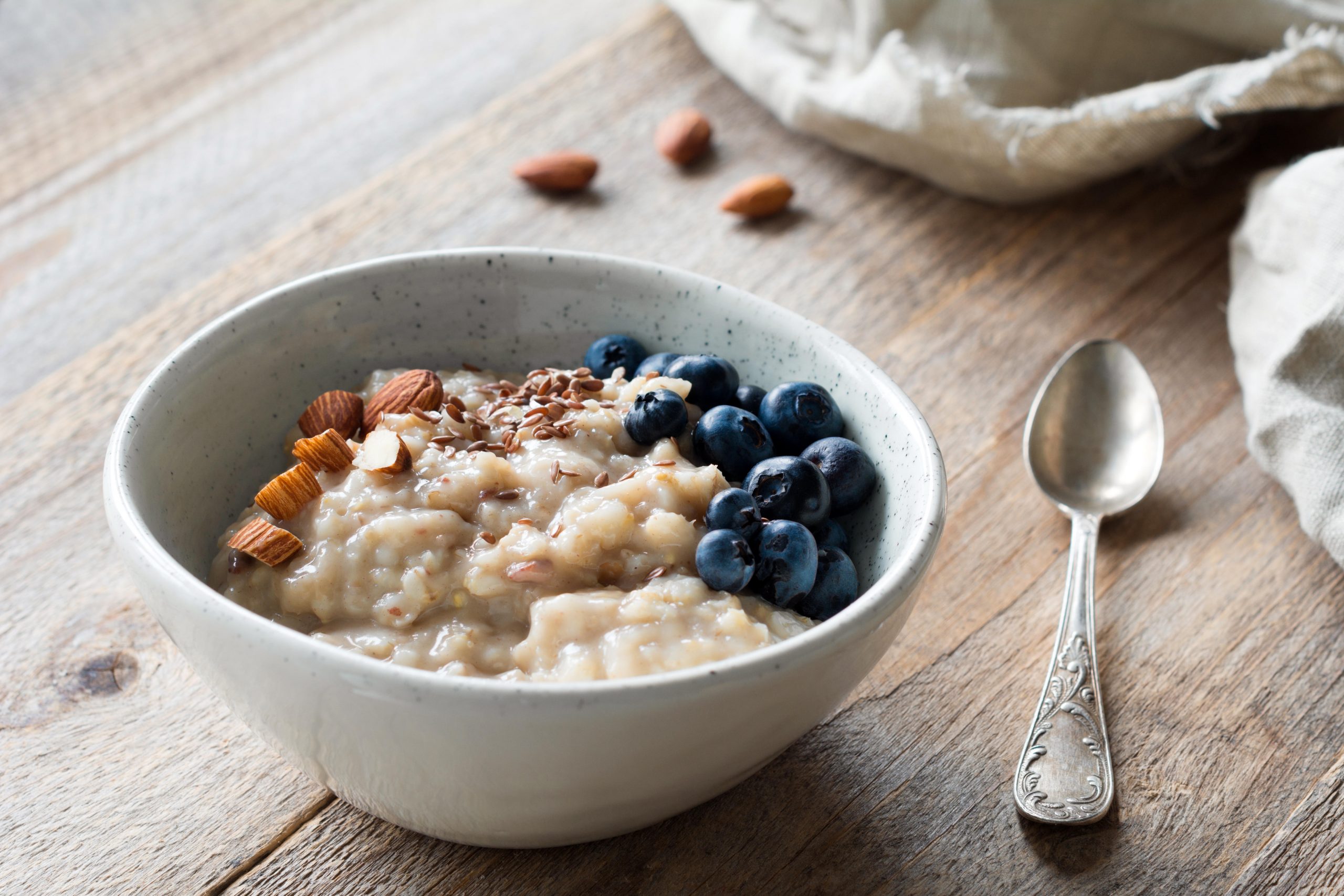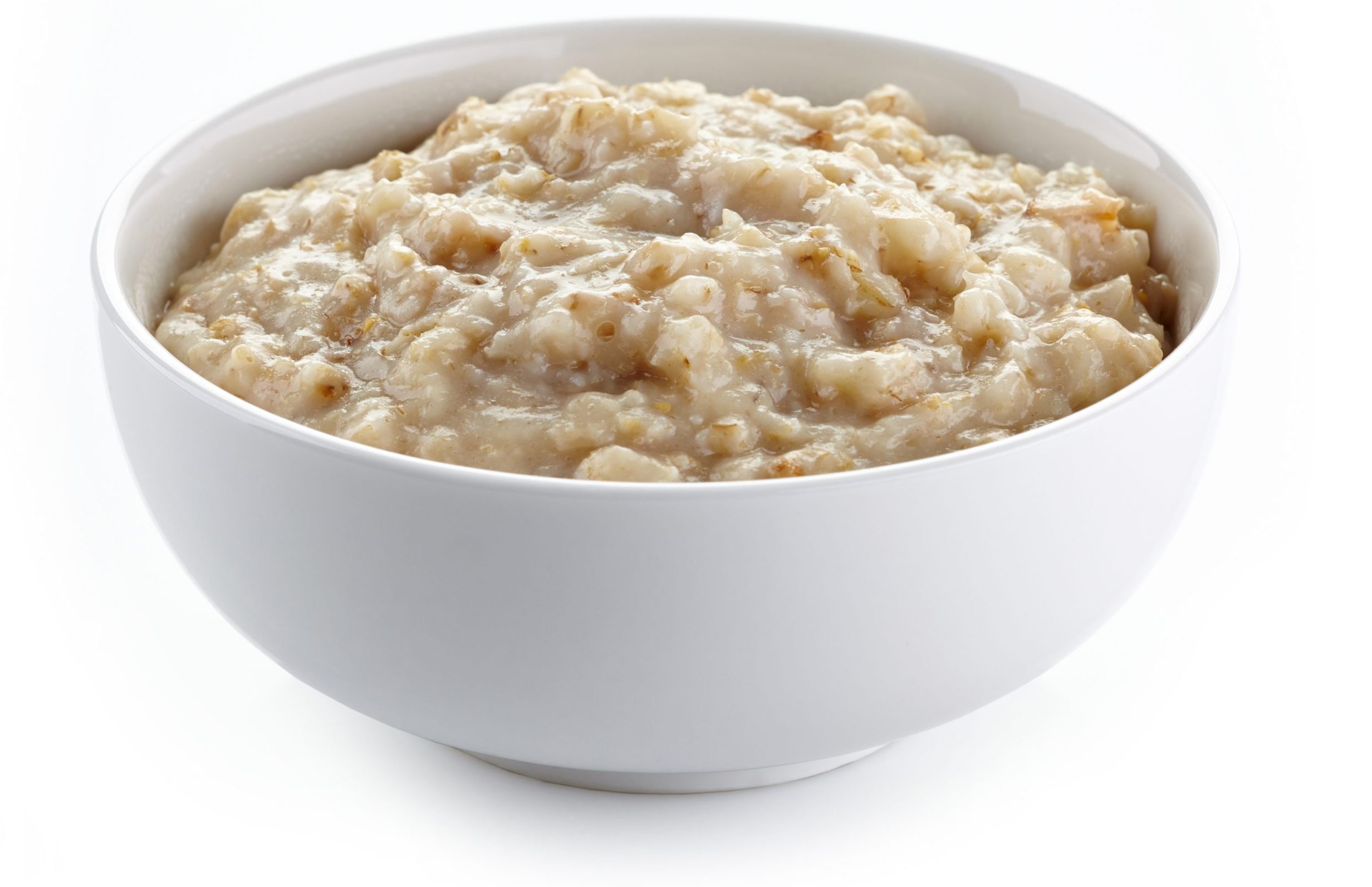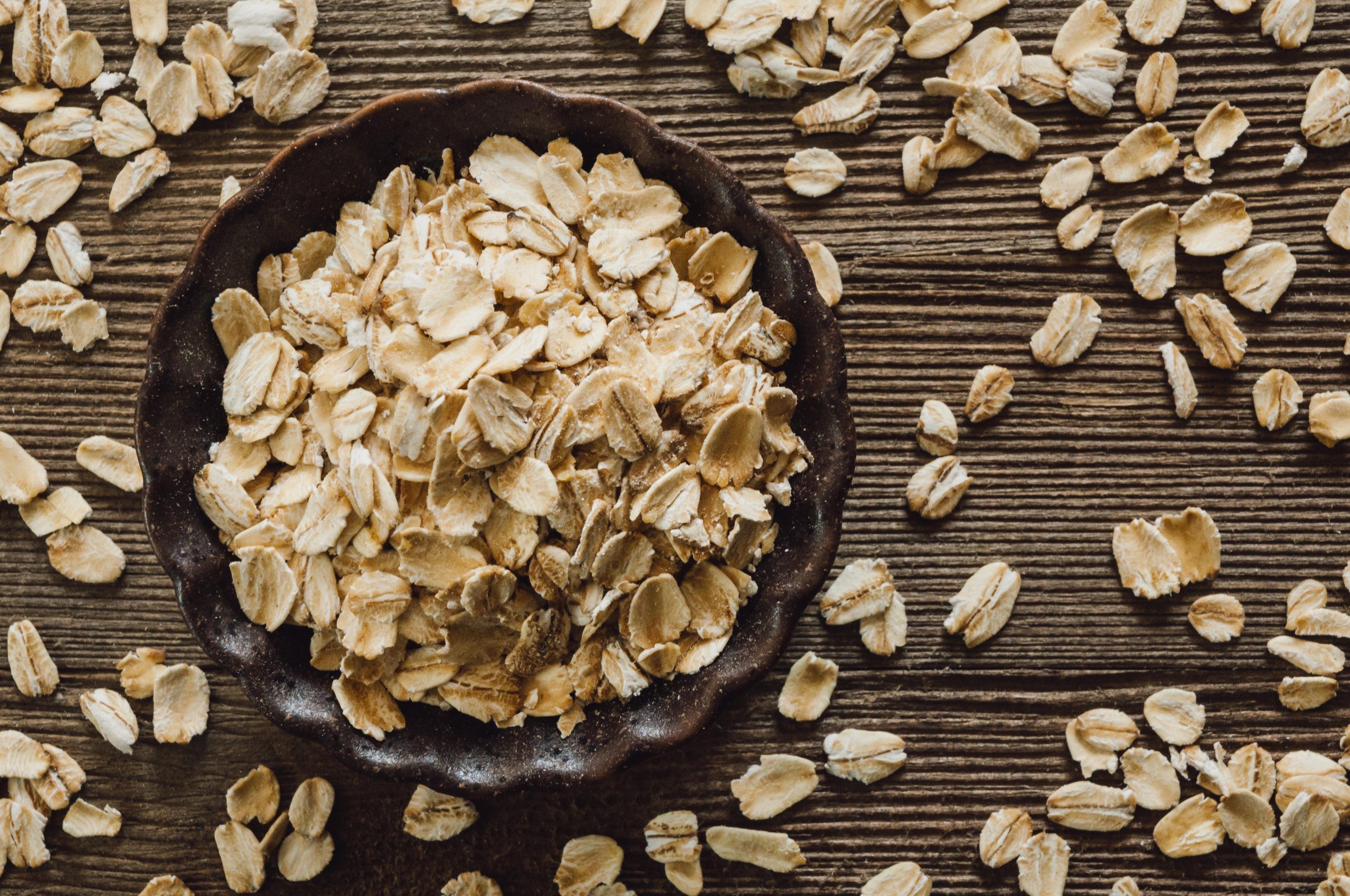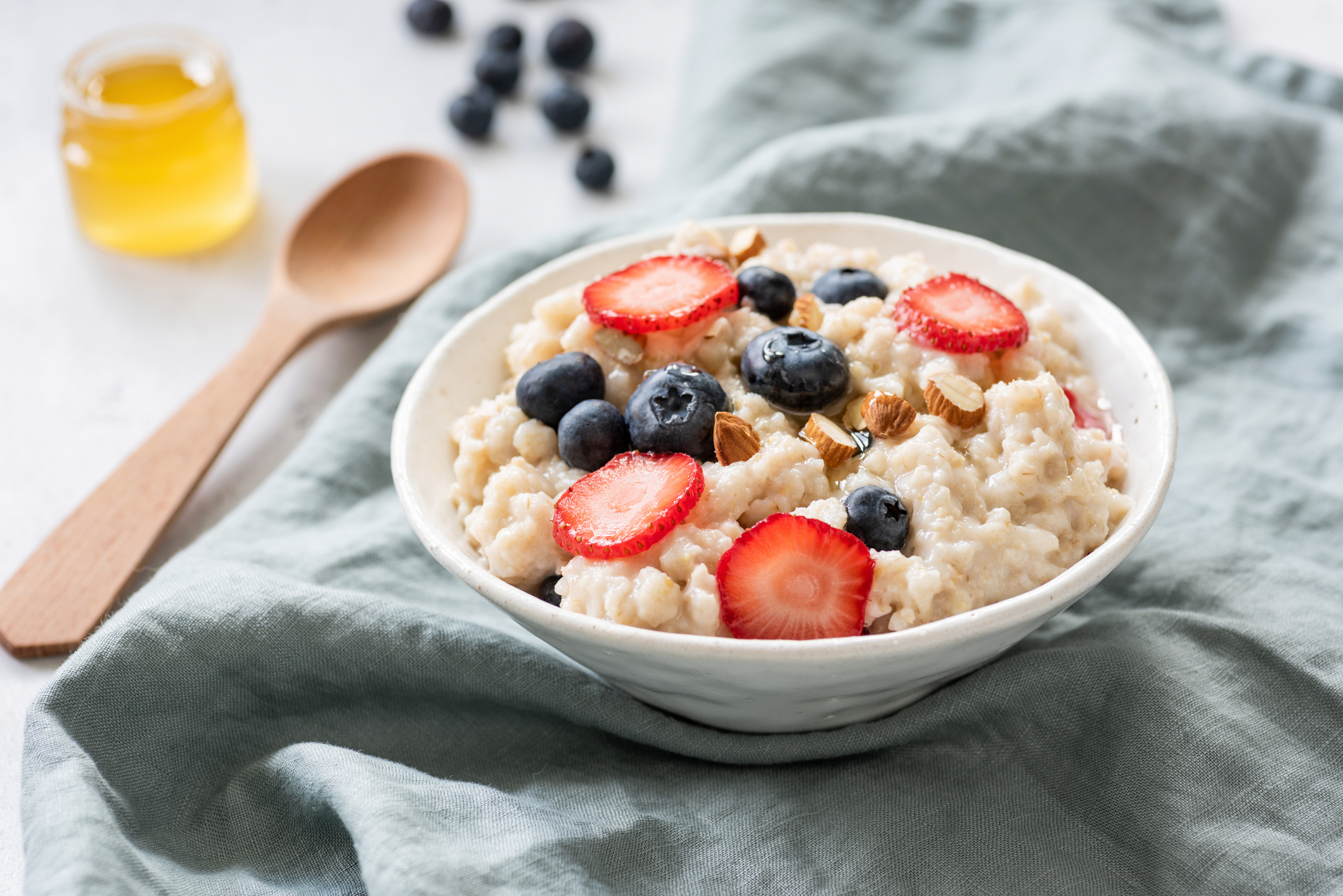How to make perfect porridge
Porridge is as simple a dish as there is, yet there are dozens of ways to take it from good to great — or, as Goldilocks would have it, from a little too much of this or that to just right. Emma Hughes investigates the dish and speaks to three chefs to get their tips for perfect porridge.


Porridge is a truly ancient dish: traces of oat dust have been found on pestles dating from 33,000 years ago, suggesting that Paleolithic humans were, if not fully paid-up porridge devotees, at least porridge-curious.
Although similar dishes are a staple of global diets — rice-based congee in South Asia, buckwheat kasha in Eastern Europe — in the West, porridge means oats and oats are synonymous with Scotland. There’s a good reason for that: to thrive, they need long daylight hours, plenty of water and poor soil quality (they’re a scavenger crop that loves a challenge). Scotland ticks all of those boxes admirably.

‘Scottish oats are better than English oats,’ believes Alan Meikle, managing director of Hamlyns of Scotland, the porridge-maker and sponsor of the World Porridge Making Championships, which take place online on October 10 this year.
‘The wonderful thing is that nothing is added and nothing is taken away — porridge is one of the most natural products you can find, as well as being traditional and very healthy, too.’ That is no idle chat: oats are full of vitamins and minerals and there is some evidence that they can support healthy cholesterol levels.
As to how to prepare them? There is simply no consensus on this key issue, but here are some suggestions from the good and the great:
Top chefs and food writers on how to make perfect porridge
Mrs Beeton
‘There are several ways of making porridge,’ declares Mrs Beeton in her 1861 Book of Household Management. ‘The one generally adopted — although by no means the best—is to sprinkle the oatmeal into boiling, slightly salted water with the left hand, meanwhile stirring briskly with a wooden spoon or wooden spatula.
'When the porridge is thick enough, the stewpan is drawn to the side of the fire, and the contents, slowly cooked from 20 to 30 minutes, being occasionally stirred to prevent it sticking to the bottom of the pan.’
Exquisite houses, the beauty of Nature, and how to get the most from your life, straight to your inbox.
A better method, she suggests, is soaking oats overnight, straining them, adding oatmeal and then simmering for 20 minutes. She also recommends pairing porridge with sherry or Port.

Dean Banks
Dean Banks, of Haar in St Andrews, says that porridge is ‘a heartwarming breakfast that provokes childhood memories in an instant’. To get it just right, he likes rolled oats cooked in a 50/50 blend of milk and water, sprinkled with sugar and with more cold milk poured over the top ‘so you can eat it quickly’.
Simon Attridge
Gleneagles’ executive chef Simon Attridge says that the key is ‘good-quality pinhead oats, stirred with a spurtle (not whisked) and seasoned with a bit of salt’.
Felicity Cloake
The Guardian food writer Felicity Cloake feels strongly that porridge should be ‘creamy in texture (lots of stirring required), but with enough chewy bite to keep it interesting’. She uses oatmeal and a 2:1 ratio of water to full-fat milk (dairy-only porridge can be sticky). ‘A girdle of very cold milk, or single cream on special occasions, is essential,’ she adds.
Flora Shedden
The semi-finalist in the 2015 Great British Bake Off now runs artisan bakery Aran in Dunkeld, Perthshire — and she has strong opinions on porridge.
‘Big fat oats,’ she advises on her blog. ‘Giant chunky rolled oats. No quick-cook fluffy things. Nothing instant. The bigger the better.’ She opts for water (‘once you get into the realms of milk or even double cream… you are talking pudding’) and toasting the oats in a dry pan before adding the liquid.

Jeremy Lee
The Dundee-born Jeremy Lee, of Quo Vadis in London, soaks his oats overnight in water, then stirs them over a gentle heat with a wooden spoon and a pinch of sea salt.
‘The consistency should be that of cream,’ he reveals, adding that ‘a glass of cold milk alongside is pleasant when eating’ and that ‘a generous spoonful of dark muscovado sugar over the porridge and left to sit will result in a marvellous syrup’.
Alan Meikle
Finally, we turn to Alan Meikle, managing director of Hamlyns of Scotland, who has porridge for breakfast ‘99.9% of the time’. He goes for ‘one-third milk to two-thirds water’ topped with Scottish berries, but he’s not a purist when it comes to cooking method.
‘I actually gave mine three minutes in the microwave this morning, because I was in a hurry,’ he admits, adding that this method works as well with traditional oats as newfangled sachets or pots — and he’s necessarily averse to those. ‘You’ve got to keep abreast of what everyone else is doing,’ he notes, cheerfully.
In fact, on a trip to London, Mr Meikle and his wife found themselves queueing with dozens of smartphone-toting teenagers outside 26 Grains, a cafe in Covent Garden serving Nordic-inspired bowls of porridge topped with the likes of roasted peach, orange-blossom cream, mint and pistachio.
‘There was coconut milk, and this and that — I thought it was going to be a bit dodgy, but actually it was brilliant,’ he remembers fondly. ‘Cost an utter fortune for a Scotsman, mind you.’

The true story of Eton Mess – and how to make the perfect one
The question, it turns out, isn't 'why' it's called Eton Mess, but whether it's actually called 'Eton Mess' at all...

The appeal of peel: How to make your own Seville orange marmalade
Marmalade should always have a special place in our hearts. And stomachs, of course.

10 ways to spice up your crumble topping recipe
Add one of these ten tasty extra ingredients for a delicious crumble topping with a difference, whether you're cooking with
Emma Hughes lives in London and has spent the past 15 years writing for publications including the Guardian, the Telegraph, the Evening Standard, Waitrose Food, British Vogue and Condé Nast Traveller. Currently Country Life's Acting Assistant Features Editor and its London Life restaurant columnist, if she isn't tapping away at a keyboard she's probably taking something out of the oven (or eating it).
